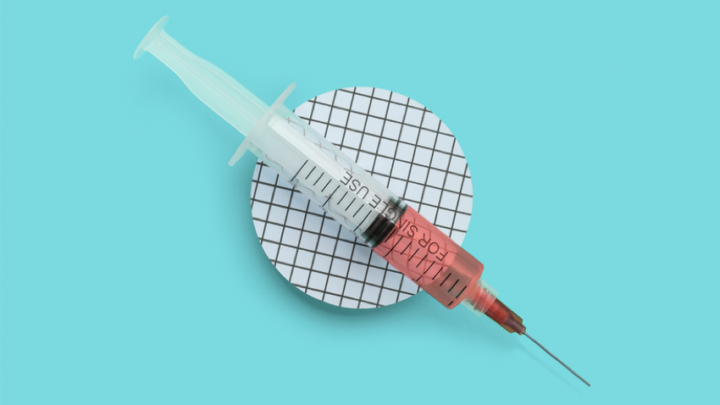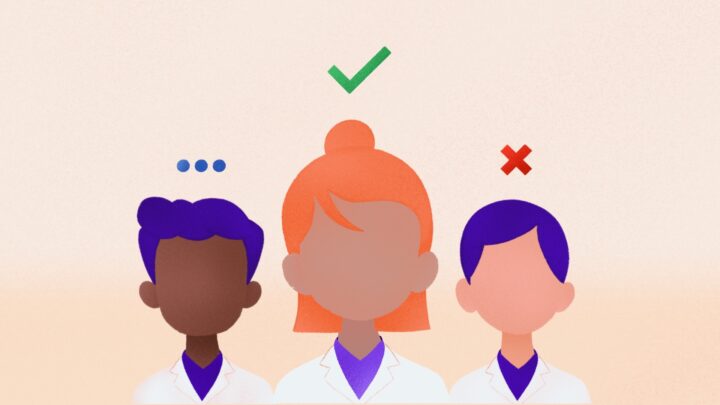
As coronavirus vaccines are being administered around the globe, many are wondering when—or if—life can go back to normal. Scientists at Columbia University just released a new model that shows millions of people will continue to be infected, regardless of the vaccine, unless we continue to social distance and wear masks.
As the Baltimore Sun reports, “There is no doubt that getting vaccinated protects the recipient. Still, several infectious-disease researchers contacted by The New York Times cautioned that it would be months before enough people in the United States will have gotten the shots to allow for normal life to begin again.
Only then will the number of people with immunity — those who have had the disease and recovered, plus those who have been vaccinated — be large enough to take the wind out of the pandemic, said Jeffrey Shaman, a public health researcher at Columbia who shared his team’s modeling calculations.
Shaman estimates that more than 105 million people have already been infected across the U.S., well above the number of cases that have been reported. And his projections show millions more infections are yet to come as the vaccine rolls out.
Social distancing, masking and other measures should remain in place until late July, “and that may be optimistic,” Shaman said. Otherwise, yet another resurgence of the virus is possible.
‘There are people who are going to want to relax the controls we have in place,’ Shaman said. ‘If we start thinking, “We’ve got a vaccine, there’s a light at the end of the tunnel, we can stop in a couple of months” — that’s way too soon.’
The coming months are critical in the race to reduce new infections and deaths, since there will ultimately be fewer people for the virus to infect as the pandemic drags on.
Lifting restrictions in early February, after most health care workers and nursing home residents are set to be vaccinated, would still mean far more infections in the long run than keeping restrictions in place until mid-March, for example.
Even with current precautions, some areas of the country have let the pandemic rage so uncontrollably that it is too late for the vaccine to have a major effect, Shaman said. His group estimates that 60% of the population in North Dakota has already been infected. Vaccines will help, but the pandemic will mostly burn out on its own, as fewer and fewer people are available to infect, he said.
On the other hand, in Vermont, with roughly a 10% infection rate, the vaccine could protect nearly the entire population if it is deployed quickly enough, Shaman said. California is teetering somewhere in between as new outbreaks take place.
The model takes into account factors like the speed and order of vaccine distribution, the effectiveness of the vaccine after one and two doses, current social distancing measures and the transmissibility of the virus. It assumes that groups like health care workers and older adults will be prioritized according to CDC guidelines, and vaccination will continue at a pace ramping up to 5 million doses per week.
The group considered scenarios in which current social distancing measures were relaxed earlier or later in the vaccine rollout, and what might happen if they were strengthened. The research was financed by Pfizer, one of the vaccine-makers, as well as the National Science Foundation and the Morris-Singer Foundation.
Of the scenarios the researchers examined, those in which restrictions were strengthened and then kept in place until much of the population could receive the vaccine resulted in some of the fewest total infections.”
In a poll of 700+ global Sermo physicians, 88% said people need to continue social distancing and mask-wearing even after being vaccinated. And 89% fear this news will be unwelcomed and ignored by the public. When asked when it will be safe to stop wearing masks, this is how Sermo doctors responded:
Fifty-four percent of Sermo physicians said they believe the double-mask trend is effective. And 72% believe this summer could be a major turning point for getting control of the virus.
Below, Sermo physicians from around the world share their professional insights, perspectives, and opinions on this important topic—in their own words:
Vaccine is probably the key to ending the pandemic, along with natura immunity; it may be that about one third to one fifth of the U.S. population is already naturally immune, so that is a good thing, and contributes to herd immunity.
Internal Medicine
We have variants of Covid and no evidence that the current vaccines will protect recipients.
Internal Medicine
In New Jersey I know only a few healthcare professionals who have been able to get even one vaccination. Those at high risk of getting and spreading the virus have not been able to be vaccinated. A better system needs to be put in place. Virginia has sites where 1000 people a day can be vaccinated. New Jersey, the most densely populated state, has not done this.
Internal Medicine
Everyday thousands of Sermo member physicians from diverse backgrounds and experiences exchange knowledge with each other. Sermo is the original medical social network that empowers today’s physicians. Over 1 million fully verified physicians across more than 150 countries come to our platform to talk with peers, participate in paid medical studies, solve challenging patient cases, contribute to the world’s largest database of drug ratings – and enjoy a few laughs along the way.
Interested in more? Check back any time and follow us on Facebook, Twitter, and LinkedIn for the latest and greatest in physician insights.
Are you a physician or healthcare practitioner? Explore the many benefits of joining Sermo’s medical community and sign up for free today.














